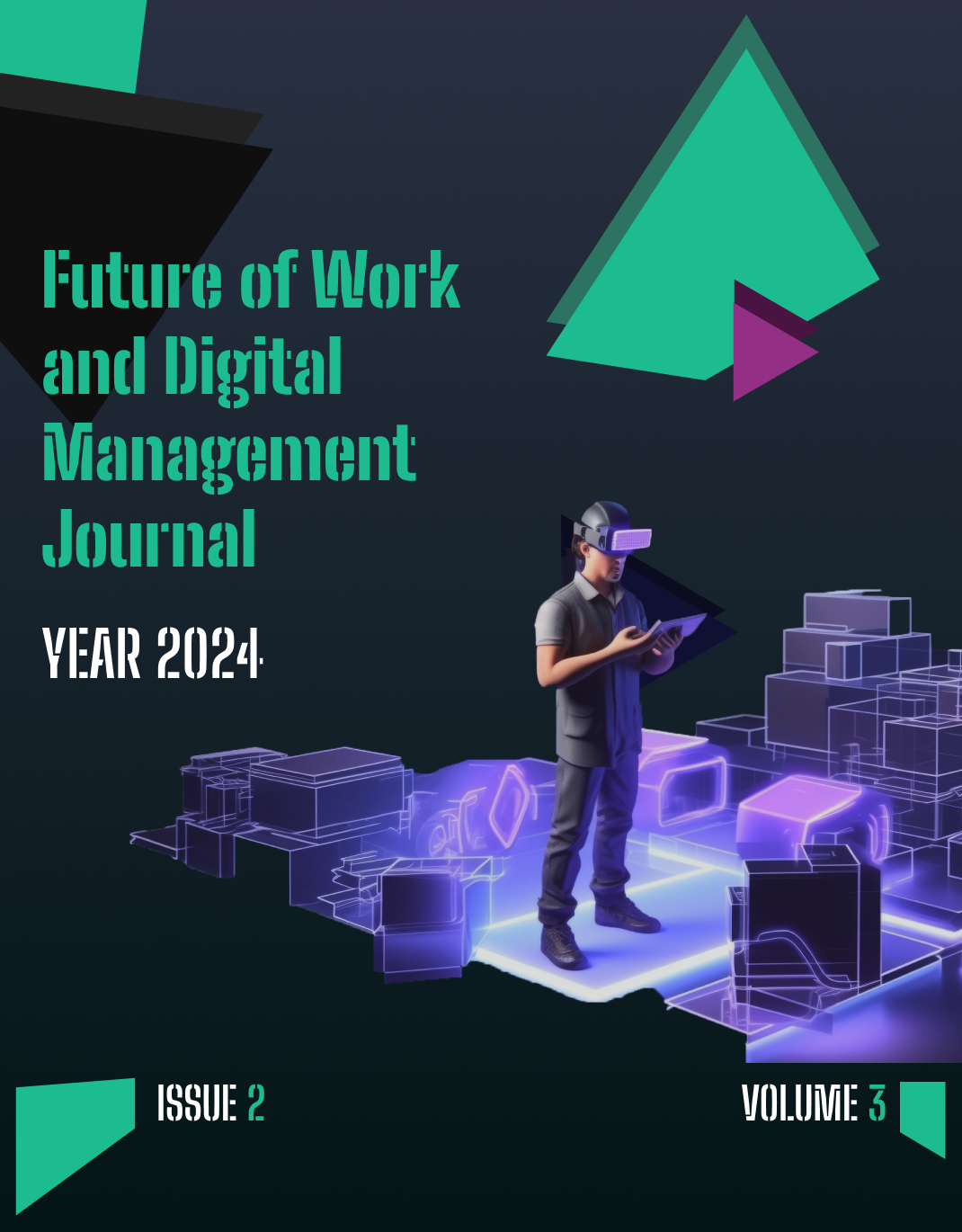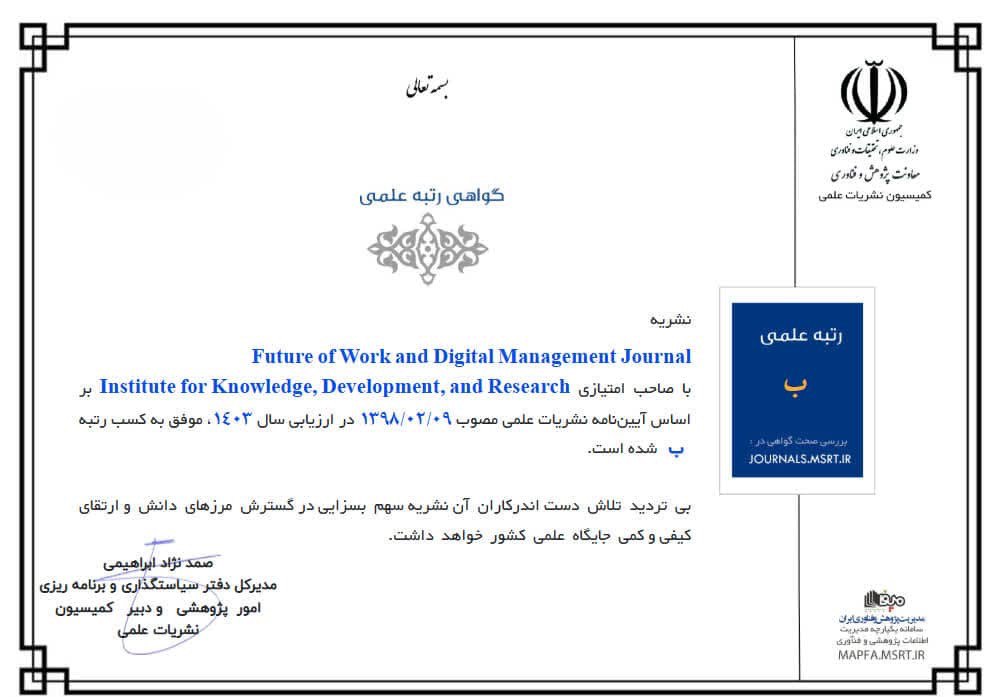Identifying Barriers to Platform Labor Regulation from the Worker Perspective
Keywords:
Gig economy, platform labor, labor regulation, worker perspective, algorithmic management, legal ambiguityAbstract
This study aimed to explore the perceived barriers to regulating platform-based labor from the perspective of workers in Tehran’s gig economy. This qualitative study employed a descriptive-interpretive design using semi-structured interviews with 23 platform workers in Tehran, selected through purposive sampling to capture diversity across platform sectors. Participants included ride-hailing drivers, delivery couriers, domestic service workers, and freelance digital laborers, all with at least six months of experience. Interviews continued until theoretical saturation was achieved. The data were transcribed and analyzed thematically using NVivo software (version 12). Themes were generated through open, axial, and selective coding processes to identify patterns related to regulatory challenges as experienced by platform workers. Analysis revealed four major thematic categories: legal and policy ambiguities, platform power and control, economic precarity and dependency, and social and cultural constraints. Legal uncertainties surrounding worker classification and weak enforcement mechanisms hindered regulatory clarity. Platform-controlled algorithmic systems and opaque rule enforcement limited worker autonomy and due process. Economic instability, high operating costs, and the absence of social protections further exposed workers to vulnerability. Social stigma, gendered risks, digital illiteracy, and a lack of worker community compounded these regulatory challenges. Participants consistently described feeling excluded from legal protections, invisible in policy discourse, and powerless against platform-imposed conditions. The findings underscore the inadequacy of current regulatory frameworks in addressing the lived realities of platform workers. Effective regulation must move beyond binary classifications of employment status to embrace the hybrid nature of gig work, incorporating worker voice, algorithmic accountability, and inclusive social protections. Addressing both structural and cultural dimensions of precarity is essential to creating fairer, more resilient regulatory environments for digital labor.
Downloads
References
[1] A. Joshi, S. Jain, and P. K. Gupta, "Challenges and Impact of the Gig Economy," Sustain. Econ., vol. 2, no. 2, p. 96, 2024, doi: 10.62617/se.v2i2.96.
[2] J. Gill and S. Gupta, "The Gig Economy and Its Implications on Contract Labor Laws," NJRS, vol. 9, no. 2, 2024, doi: 10.69953/njrs.v9i2.11.
[3] N. v. Doorn, F. Ferrari, and M. Graham, "Migration and Migrant Labour in the Gig Economy: An Intervention," Work Employment and Society, vol. 37, no. 4, pp. 1099-1111, 2022, doi: 10.1177/09500170221096581.
[4] D. Peetz, "Can and How Should the Gig Worker Loophole Be Closed?," The Economic and Labour Relations Review, vol. 34, no. 4, pp. 840-854, 2023, doi: 10.1017/elr.2023.57.
[5] Q. H. Fadhlulloh, A. F. Azhari, and Rizka, "Comparison of the Legal Position of Gig Economy Workers in Indonesia, the Netherlands, and the UK," Fundamental Jurnal Ilmiah Hukum, vol. 12, no. 2, pp. 307-322, 2023, doi: 10.34304/jf.v12i2.165.
[6] M. Grüning, T. Wolf, and M. Trenz, "Does Regulation Help? The Impact of California‘s AB5 on Gig Workers," 2023, doi: 10.24251/hicss.2023.436.
[7] A. E. Ponomarchenko, "The Legal Status of Employment in the Context of the Development of the Gig Economy," Proceedings of the Southwest State University Series History and Law, vol. 12, no. 6, pp. 50-60, 2022, doi: 10.21869/2223-1501-2022-12-6-50-60.
[8] S. M. Mironova, D. V. Kozhemyakin, and A. E. Ponomarchenko, "Adaptation of the Legal Regulation of Labor, Civil, Tax Relations to the Gig Economy," Law Enforcement Review, vol. 6, no. 4, pp. 314-329, 2022, doi: 10.52468/2542-1514.2022.6(4).314-329.
[9] R. Singh and G. K. Bisen, "Job Related Uncertainty in the Age of Artificial Intelligence and Gig Economy," CRR, vol. 1, no. 1, pp. 85-100, 2023, doi: 10.21844/crr.v1i01.1107.
[10] I. O. Ajaiyeoba, "Diversity and Emotional Labor In the Gig Economy," Equality Diversity and Inclusion an International Journal, 2024, doi: 10.1108/edi-11-2023-0394.
[11] S. Hardy, "Rise of the ‘Gig Worker’ Economy or Just Mending the Legislative Leak?," Business Law Review, vol. 43, no. Issue 1, pp. 18-23, 2022, doi: 10.54648/bula2022002.
[12] D. Singh, "Theoretical Integration of Gig Economy: Exploring Various Prospects, Challenges and Regulatory Measures," International Journal for Multidisciplinary Research, vol. 5, no. 1, 2023, doi: 10.36948/ijfmr.2023.v05i01.4860.
[13] A. Naz and A. Raj, "Assessment of Worker Satisfaction With Special Emphasis on Gig Economy: Workers, Work and Platform Perspective," Iosr Journal of Humanities and Social Science, vol. 29, no. 9, pp. 62-68, 2024, doi: 10.9790/0837-2909066268.
[14] S. A. Omar, R. Paidi, and F. Furuoka, "Su-Isu Berkaitan Ekonomi Gig Di Jepun: Analisis Laporan Akhbar," International Journal of East Asian Studies, vol. 12, no. 2, pp. 69-83, 2023, doi: 10.22452/ijeas.vol12no2.6.
[15] S. Khanal and M. P. Khanal, "Regulating Gig Economy in Nepal: How Can Nepal Benefitted From the Gig Platform?," J. Musikot Campus, vol. 2, no. 1, pp. 173-192, 2024, doi: 10.3126/jmc.v2i1.70844.
[16] M. Y. Permana, N. R. Izzati, and M. W. Askar, "Measuring the Gig Economy in Indonesia: Typology, Characteristics, and Distribution," Jurnal Manajemen Teknologi, vol. 21, no. 3, pp. 339-358, 2022, doi: 10.12695/jmt.2022.21.3.7.
[17] S. M. Mironova and K. A. Ponomareva, "Transformation of the Role of Banks in the Conditions of Development of the Gig Economy," Banking Law, pp. 32-39, 2024, doi: 10.18572/1812-3945-2024-2-32-39.
[18] Y. Uchiyama, F. Furuoka, B. Lim, K. H. Pazim, and J. Li, "Value Creation, Consumers’ Active Intervention and Workers’ Working Conditions: a New Conceptual Framework for the Gig Economy," Jurnal Kinabalu, vol. 29, pp. 143-171, 2023, doi: 10.51200/ejk.v29i.3705.
[19] N. H. A. Nawawi, R. Ramli, N. Khalid, and S. F. A. Rashid, "Understanding the Presence of the Gig Economy in Malaysia," Majcafe, vol. 31, no. 1, pp. 274-293, 2023, doi: 10.60016/majcafe.v31.11.
[20] K. Masakazu, E. Sisdianto, G. Suwardika, and D. S. Nugroho, "Peran Digital Freelancer Marketplace Dan Media Sosial Terhadap Perkembangan Gig Economy Worker," Jurnal Pendidikan Ekonomi Undiksha, vol. 15, no. 1, pp. 214-225, 2023, doi: 10.23887/jjpe.v15i1.61469.
Downloads
Published
Submitted
Revised
Accepted
Issue
Section
License

This work is licensed under a Creative Commons Attribution-NonCommercial 4.0 International License.








